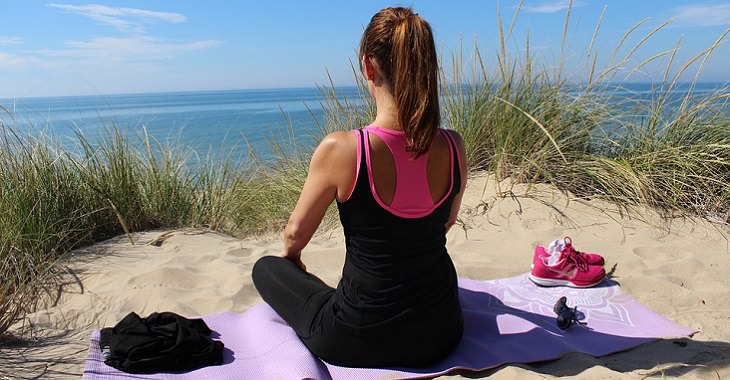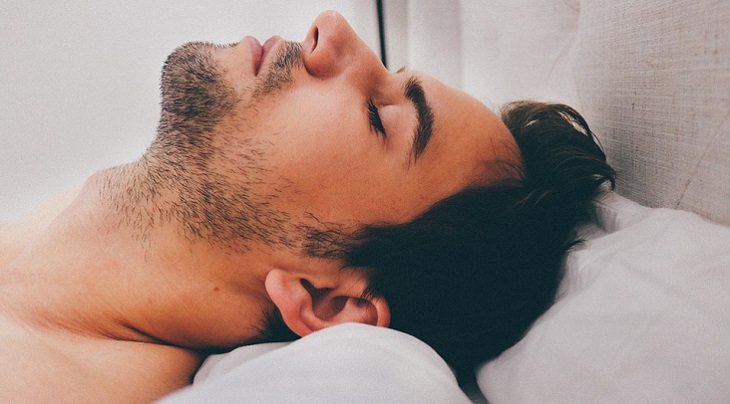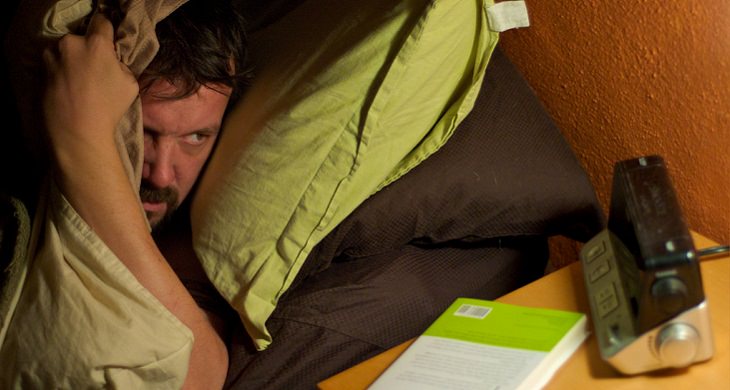


It's important to note that these exercises won't just make you fall asleep but will increase your awareness of your mind and body at night, allowing you to avoid the intrusive thoughts that usually keep you awake and cause additional health issues. Once you learn how to balance the emotional and rational sides within you, you'll gain a sense of calm and wholeness that will help you enjoy better and more restful sleep.
After lying comfortably in bed, take 5 deep breaths, inhaling through your nose and exhaling through your mouth. As you inhale, try to imagine your lungs filling with air as your chest expands, and as you exhale, imagine the thoughts and emotions that accompanied you throughout the day simply disappearing, with an emphasis on eliminating various feelings of tension. This process will help prepare you for the next step.
Begin this exercise with self-examination and ask yourself: "How do my body and mind feel?" Take your time to perform this step; don't worry if many thoughts continue to race through your mind. Moreover, don't resist or deny them—no matter how much they disturb your peace. Just let them exist.
Now, you need to become aware of specific points in your body in more detail, and for a moment, let go of the thoughts that are surrounding you. Focus your attention on the feeling of your body touching the bed, and feel how your body's weight seems to sink into the mattress. Try to understand where the main points of contact between your body and the bed are and whether your body's weight is evenly distributed on the mattress. At the same time, focus on the noises and sounds in the room, and try to determine if there is a particular sound that disturbs your peace; is it a sound you can change, or is it a noise beyond your control? After you do this, instead of resisting and rejecting the sound, give it your full attention for about 30 seconds, and then return your focus to your body.

At this stage, you should try to understand how your body truly feels, initially doing so generally; does your body feel heavy or light, restless or calm? After you have formed a general picture in your mind, try to get a more accurate image by scanning your body from head to toe, attempting to identify tension and stiffness as well as areas that feel relaxed. Start at the head and move towards the neck, shoulders, back, pelvis, legs, and down to the feet while searching for sensations of tension and discomfort, as well as the relaxed areas signaling comfort and calm. Each such scan should last about 20-30 seconds, and you can perform it as many times as you wish.
At this point, you will likely notice where your breathing is concentrated, but if you haven't felt it yet, focus your attention on where the act of breathing is most noticeable. It's important not to try to change the pace of your breathing; you should allow your body to do this naturally. There is no correct way to breathe during this exercise, so if you feel that the action is concentrated in your chest, for example, and not in the abdominal area, that's perfectly fine. Additionally, pay attention to whether your breathing is deep or fast, long or short, flowing or irregular.
While you are focused on your breathing, it's quite logical that your mind will begin to wander. Therefore, when you realize that you are not focused and that your mind is not concentrating on your breathing, gradually return your focus to the act of breathing—inhaling and exhaling. Once you manage to refocus on your body (if your mind has wandered), you can move on to the next step. Of course, if you remained focused, proceed directly from the fifth step to the seventh step.

This step focuses on thinking about the day that has passed in a focused and structured way. Recall in your mind the first thing you remember from that day, starting from the moment you woke up in the morning. Now, skim through the entire day in your mind, including meetings, conversations, meals, etc., but don't dwell on each event; just observe them in fast motion, doing a sort of review for about 3 minutes until you reach the current moment in the present. It may take you a few days to get used to the quick review, but eventually, you will feel comfortable with this speed. It's worth noting that you may be tempted to analyze certain events that occurred during your day, and this is entirely normal and common, although there is no point in getting caught up in deep thoughts at this point in the night. If you feel for a moment that you are not focused and are delving into too many details, gradually return to thinking about the day that passed in fast motion, right from the point where you left off.
After reviewing your day and reaching the moment when you are lying in bed, return your focus to your body. Now, direct your attention to the small toe of your left foot, and imagine it as a switch that turns itself off for the entire night. You can even say the words "turn off and rest" while focusing on the toe. This action is like a kind of confirmation for the muscles, joints, bones, and the entire body to turn themselves off for the whole night.
Now you need to move on to the next toe and do the exact same thing as in the previous step, and then move on to the next one until you perform this exercise on all your toes. Then continue this way from the ball of your foot, through the heel and ankle, to the hip area. Before performing this exercise on the other leg, pause for a moment to notice the difference felt between the left leg and the right leg—the "turned off" leg and the one that has not yet received the command. Repeat the same exercise on your right leg, from the toes to the hip.

After you've gone through the entire lower body, move on to the upper body; through the arms, hands, fingers, up the throat to the top of the head. Pause for a moment to enjoy the feeling of release and tension-free relaxation, and simply let go of control over your body. Now you can allow your mind to wander as much as you want until you simply fall asleep. It's possible that you won't stay awake at this stage or even during the previous step, and of course, there's no need to fight the urge to fall asleep.
It is important to clarify the purpose of mindfulness and to remember that this exercise is not just to fall asleep but primarily to increase awareness and make ourselves understand our thoughts during the night, those that likely prevent us from falling asleep. After you do this for several nights and remember the entire exercise routine, you will achieve the peace and calm that will help you fall asleep quickly and easily.